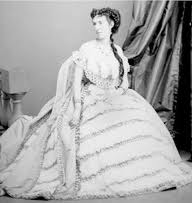 Virginia Stealthy Beauty, Belle Boyd, was not only a gorgeous and seductive Southern Spy, but a brilliant and Beguiling Dixie Vixen. Born Isabella Marie Boyd, a native of Bunker Hill, Virginia, she was not one to be trifled with, the oldest of several siblings, she was a tom boy of sorts and lorded it over her younger neighbors and kin. At 18 years old, on July 4, 1861, a contingent of Union Cavalry, under the impression that Confederate flags were hidden in Boyd’s room, raised a United States banner, while cursing the mother. The teenage, Virginia patriot, flew into a rage, grabbed an 1849 pocket pistol and immediately shot the trooper dead. In Boyd’s own words she describes the confrontation,
Virginia Stealthy Beauty, Belle Boyd, was not only a gorgeous and seductive Southern Spy, but a brilliant and Beguiling Dixie Vixen. Born Isabella Marie Boyd, a native of Bunker Hill, Virginia, she was not one to be trifled with, the oldest of several siblings, she was a tom boy of sorts and lorded it over her younger neighbors and kin. At 18 years old, on July 4, 1861, a contingent of Union Cavalry, under the impression that Confederate flags were hidden in Boyd’s room, raised a United States banner, while cursing the mother. The teenage, Virginia patriot, flew into a rage, grabbed an 1849 pocket pistol and immediately shot the trooper dead. In Boyd’s own words she describes the confrontation,
“a drunken Union soldier addressed my mother and myself in language as offensive as it is possible to conceive. I could stand it no longer…we ladies were obliged to go armed in order to protect ourselves as best we might from insult and outrage, the commanding officer…inquired into all the circumstances with strict impartiality, and finally said I had done perfectly right.”
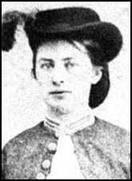 Isabella Marie Boyd, was born on May 9, 1844, in Bunker Hill, Virginia. At 10 years of age her family move to Martinsburg, with their six slaves, one of whom, Eliza Corsey, became Belle’s close companion and sometime accomplice in her espionage adventures. Her father was a successful shopkeeper who would eventually join the Confederate Army as a member of the Stonewall Brigade. At 12 years of age, Boyd attended Baltimore’s Mount Washington Female College, where young Southern women “of gentle birth” were “trained to place proper reliance on their own powers.” After her formal societal debut in Washington, she returned to the Shenandoah Valley in the spring of 1861, shortly after the fall of Fort Sumter.
Isabella Marie Boyd, was born on May 9, 1844, in Bunker Hill, Virginia. At 10 years of age her family move to Martinsburg, with their six slaves, one of whom, Eliza Corsey, became Belle’s close companion and sometime accomplice in her espionage adventures. Her father was a successful shopkeeper who would eventually join the Confederate Army as a member of the Stonewall Brigade. At 12 years of age, Boyd attended Baltimore’s Mount Washington Female College, where young Southern women “of gentle birth” were “trained to place proper reliance on their own powers.” After her formal societal debut in Washington, she returned to the Shenandoah Valley in the spring of 1861, shortly after the fall of Fort Sumter.
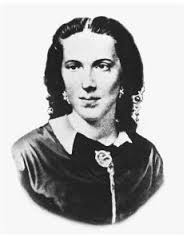 By the time she was 18, she was something of a national celebrity, and a hundred cavalrymen are said to have escorted her to her first major prison sentence in Baltimore. She was only imprisoned for a week and upon her release, moved to Front Royal, Virginia to continue her espionage. On May 23, 1862, she was staying at a local hotel with her mother, where several Union officers also were lodged. Boyd listened to their plans via a knothole in their room and then rode conspicuously in her “dark blue dress and fancy white apron, crossed the gap between the two armies in range of Union rifles and artillery, and breathlessly delivered her message to a staff officer.” Later, according to her memoirs, Boyd received a thank you note from Jackson for her “immense service.”
By the time she was 18, she was something of a national celebrity, and a hundred cavalrymen are said to have escorted her to her first major prison sentence in Baltimore. She was only imprisoned for a week and upon her release, moved to Front Royal, Virginia to continue her espionage. On May 23, 1862, she was staying at a local hotel with her mother, where several Union officers also were lodged. Boyd listened to their plans via a knothole in their room and then rode conspicuously in her “dark blue dress and fancy white apron, crossed the gap between the two armies in range of Union rifles and artillery, and breathlessly delivered her message to a staff officer.” Later, according to her memoirs, Boyd received a thank you note from Jackson for her “immense service.”
Through family connections she became a courier, delivering messages to and from Confederate Generals Stonewall Jackson, P.G.T. Beauregard and J.E.B. Stuart and devised other ways to aid the cause. She stole weapons from Union camps, weaving arsenals of sabers and pistols through the steel coils of her hoop skirt, and smuggled precious quinine across the Potomac River to secessionist towns in Maryland. Not all of her endeavors were altruistic; she charged $3 to carry letters across the lines and $2 for liquor and once attacked a Confederate soldier who refused to pay for his bottle.
Union officials began to monitor Boyd’s movements, but she used conversations with her handlers to accumulate detailed information on their movements, sending the intelligence in letters to Confederate commanders. After one such letter was intercepted, Boyd escaped punishment by feigning ignorance.
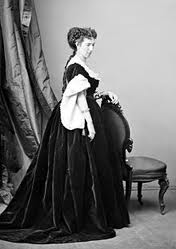 Her contemporaries, men and women alike, condemned her flirtatious and occasionally peculiar behavior, denouncing her as the lowest sort of “camp follower” and “the fastest girl in Virginia or anywhere else for that matter.” Wartime journalists reported that Belle was once “closeted four hours” with Union General James Shields and subsequently wrapped a rebel flag around his head, and that she aimed to seduce Stonewall Jackson, “giving vent to romantic desires to occupy his tent and share his dangers.” When Union General Nathaniel Banks briefly established headquarters at Front Royal, she scandalized the Shenandoah Valley by draping a Confederate flag around his head. She carried a pet crow with a split tongue that she’d trained to say “Miss Belle, Stonewall and General Lee.”
Her contemporaries, men and women alike, condemned her flirtatious and occasionally peculiar behavior, denouncing her as the lowest sort of “camp follower” and “the fastest girl in Virginia or anywhere else for that matter.” Wartime journalists reported that Belle was once “closeted four hours” with Union General James Shields and subsequently wrapped a rebel flag around his head, and that she aimed to seduce Stonewall Jackson, “giving vent to romantic desires to occupy his tent and share his dangers.” When Union General Nathaniel Banks briefly established headquarters at Front Royal, she scandalized the Shenandoah Valley by draping a Confederate flag around his head. She carried a pet crow with a split tongue that she’d trained to say “Miss Belle, Stonewall and General Lee.”
Boyd’s flirtations with Union officers, however, were her strongest source of influence. Contemporaries noted that “without being beautiful, she is very attractive…quite tall…a superb figure…and dressed with much taste.” On one occasion, she wooed a Northern soldier to whom, she wrote, “I am indebted for some very remarkable effusions, some withered flowers, and last, but not least, for a great deal of very important information…I must avow the flowers and the poetry were comparatively valueless in my eyes. I allowed but one thought to keep possession of my mind—the thought that I was doing all a woman could do for her country’s cause.”
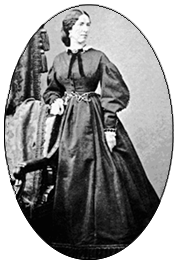 Boyd was arrested six or seven times, but managed to avoid incarceration until July 29, 1862, when she was finally imprisoned in Old Capitol Prison in Washington, D.C. She was released after a month as part of a prisoner exchange, but was arrested again in July 1863. Boyd was not a model inmate. She waved Confederate flags from her window, she sang Dixie, and devised a unique method of communicating with supporters outside. Her contact would shoot a rubber ball into her cell with a bow and arrow and Boyd would sew messages inside the ball. In December 1863 she was released and banished to the South. She sailed for England on May 8, 1864 and was arrested again as a Confederate courier. She finally escaped to Canada with the help of a Union naval officer, Lieutenant Sam Hardinge and eventually made her way to England where she and Hardinge were married on August 25, 1864.
Boyd was arrested six or seven times, but managed to avoid incarceration until July 29, 1862, when she was finally imprisoned in Old Capitol Prison in Washington, D.C. She was released after a month as part of a prisoner exchange, but was arrested again in July 1863. Boyd was not a model inmate. She waved Confederate flags from her window, she sang Dixie, and devised a unique method of communicating with supporters outside. Her contact would shoot a rubber ball into her cell with a bow and arrow and Boyd would sew messages inside the ball. In December 1863 she was released and banished to the South. She sailed for England on May 8, 1864 and was arrested again as a Confederate courier. She finally escaped to Canada with the help of a Union naval officer, Lieutenant Sam Hardinge and eventually made her way to England where she and Hardinge were married on August 25, 1864.
Boyd remained in England for two years writing her memoirs, Belle Boyd in Camp and Prison, and achieving success on the stage. She returned to America, a widow and mother, in 1866 where she continued her stage career and lectured on her war experiences; she billed her show as “The Perils of a Spy” and herself as “Cleopatra of the Secession.”
In 1869, she married John Swainston Hammond, an Englishman who had fought for the Union Army. In November 1884, sixteen years and four children later, she divorced Hammond. Two months later she married Nathaniel High, Jr., an actor seventeen years her junior, what a gal! She died, nearly destitute of a heart attack at age 56, on June 11, 1900, while on tour in Kilbourn, Wisconsin and is buried there, in Spring Grove Cemetery.
The Virginia Stealthy Beauty, Belle Boyd, was not only a Beguiling Dixie Vixen, but an example of a clandestine home front hero, that fought her rebellion the way no other southern patriot, would or could.
Bummer


I never realized before just how enterprising Belle Boyd was. Of course, she pulled off a lot of this because of men never believing a woman could be anything other than the weaker sex. She must have had a good laugh at all the important men she could wrap around her little finger.
Louis,
Grandma Belle would say that the real power is the woman behind the throne. Most men’s fall from grace, by believing that they are omnipotent, not realizing their own limitations and not listening to the council of their so-called weaker sex. Women have always had the power and always will. Some just don’t know it yet.
Bummer